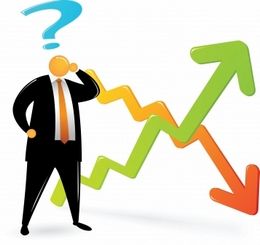“On the surface it looks like there is deflation on the way. Japan is failing to inflate and China is tightening because of the problems in their banking system and shadow banking system. The EU banking system has also restricted lending....
“This has led to the ECB having reduced its balance sheet substantially. In the US there is now tapering of $20 billion per month. If this continues we will have a deflationary implosion of the world economy. We will have a total collapse of the financial system because the massive debt cannot be repaid in that environment.
Central bankers are aware of this but they seem to either be totally paralyzed or perhaps overconfident in their ability to reflate if necessary. Judging by Japan and Europe, it’s much harder to reflate than these central bankers would imagine.
Printing money at current levels no longer has any effect, and interest rates are already at virtually zero. Governments also know that a deflationary implosion will also lead to a total loss of power and control. This would just usher in anarchy.
So let me again state that money printing is not the solution. Worthless pieces of paper cannot create wealth. Whether central banks print or don’t print wealth, they are doomed because either alternative is catastrophic for the world. They are just a different way of reaching the end game. As Ludwig von Mises said, ‘There is no way of avoiding the final collapse.’
“This has led to the ECB having reduced its balance sheet substantially. In the US there is now tapering of $20 billion per month. If this continues we will have a deflationary implosion of the world economy. We will have a total collapse of the financial system because the massive debt cannot be repaid in that environment.
Central bankers are aware of this but they seem to either be totally paralyzed or perhaps overconfident in their ability to reflate if necessary. Judging by Japan and Europe, it’s much harder to reflate than these central bankers would imagine.
Printing money at current levels no longer has any effect, and interest rates are already at virtually zero. Governments also know that a deflationary implosion will also lead to a total loss of power and control. This would just usher in anarchy.
So let me again state that money printing is not the solution. Worthless pieces of paper cannot create wealth. Whether central banks print or don’t print wealth, they are doomed because either alternative is catastrophic for the world. They are just a different way of reaching the end game. As Ludwig von Mises said, ‘There is no way of avoiding the final collapse.’














